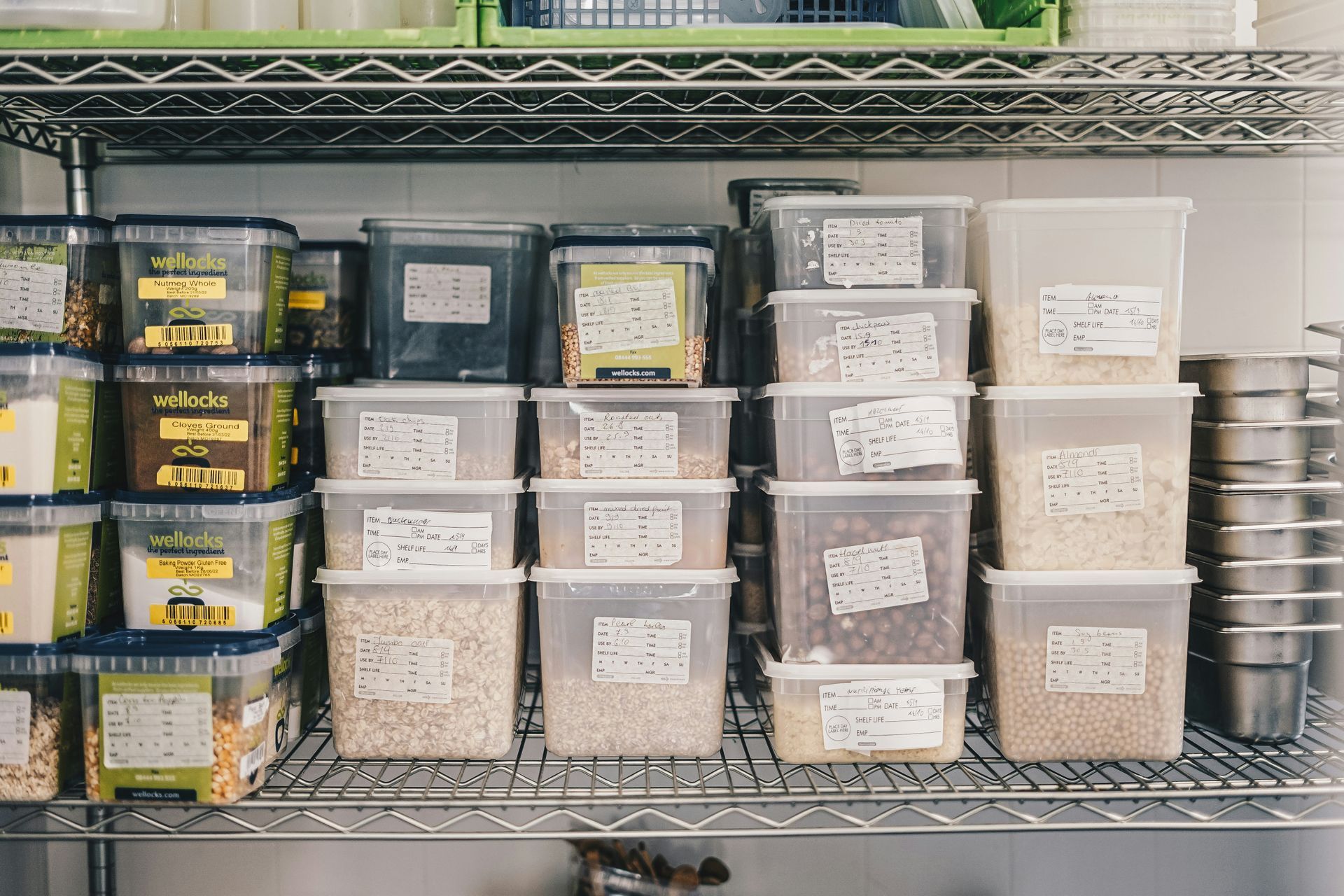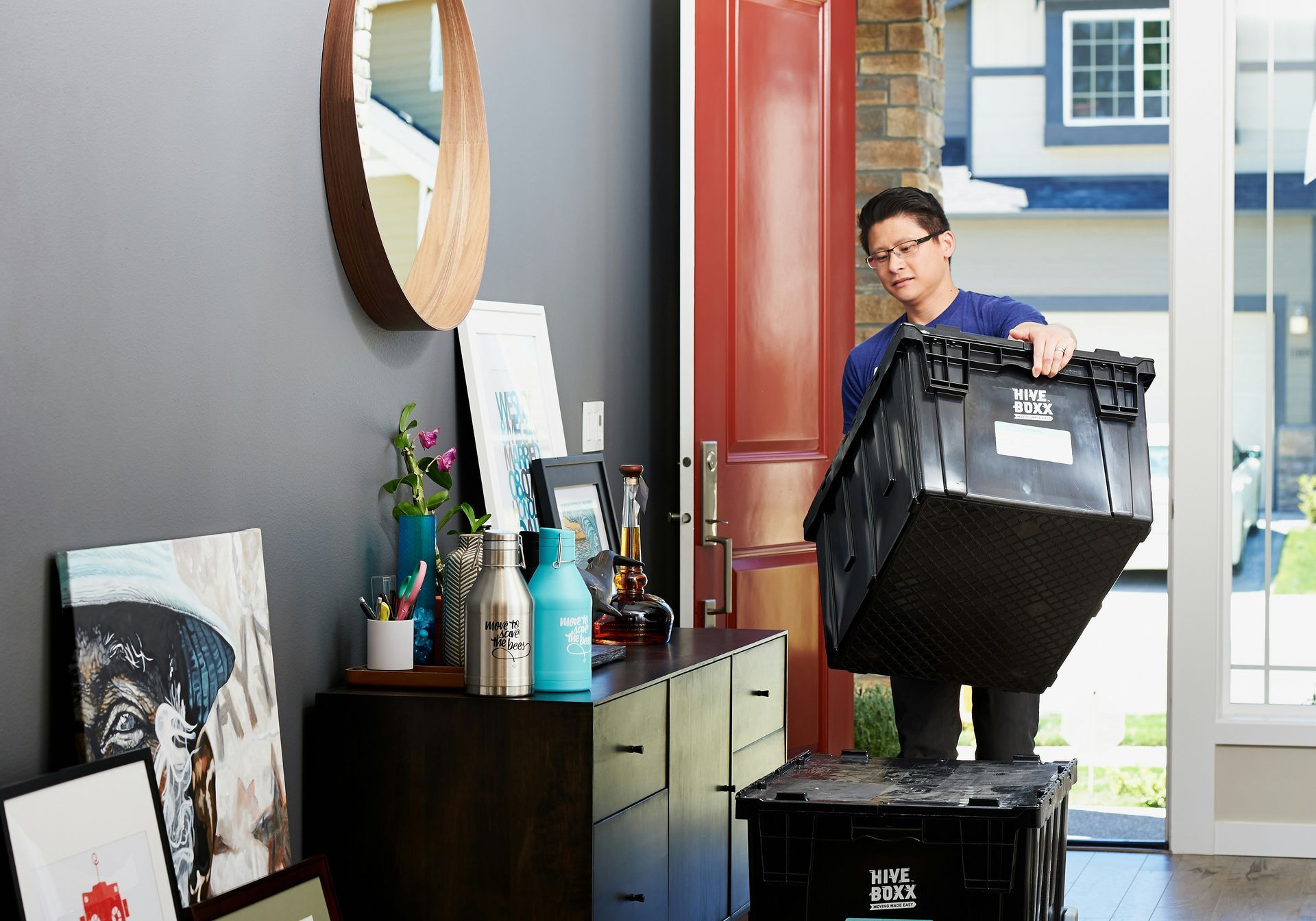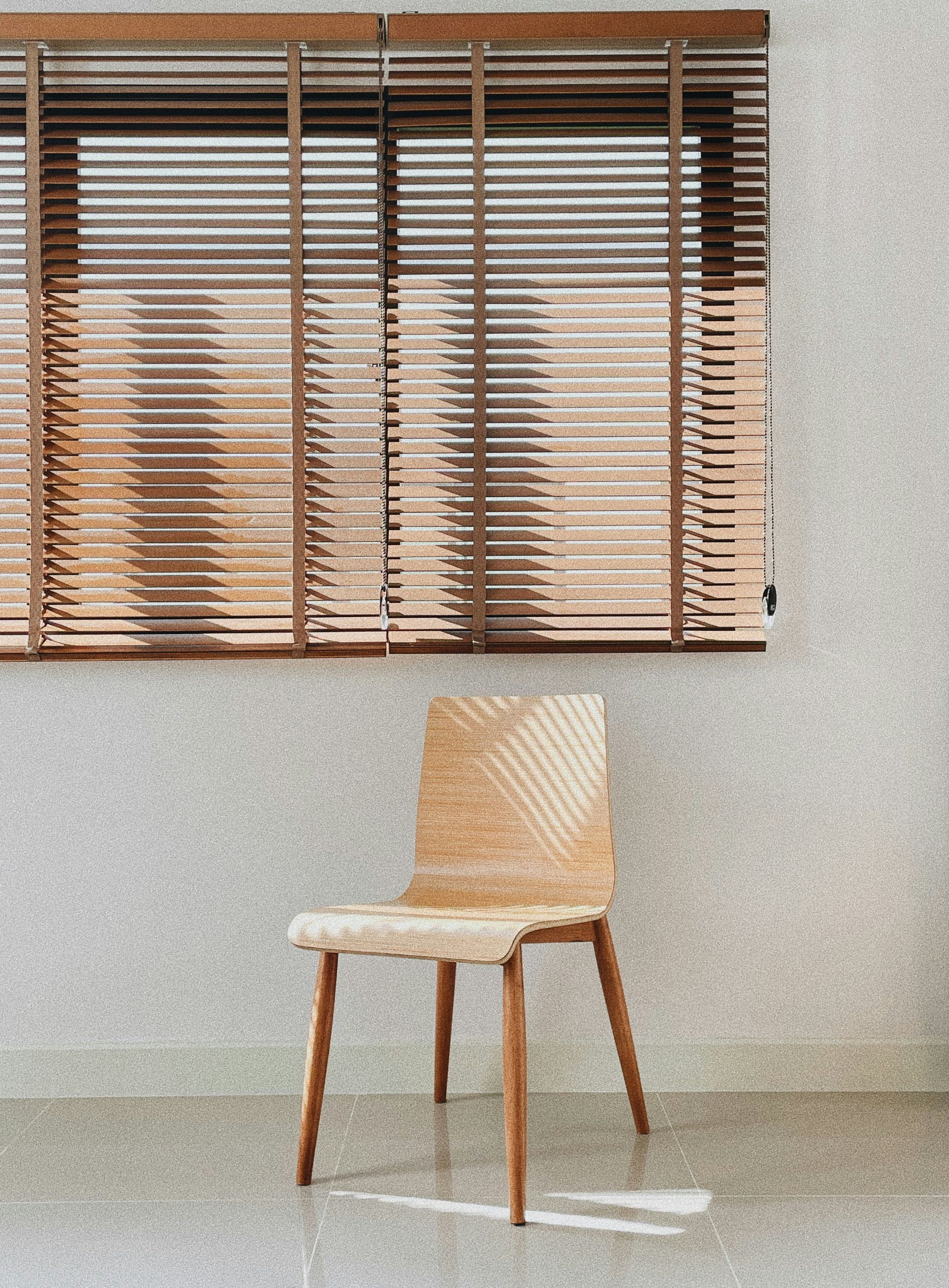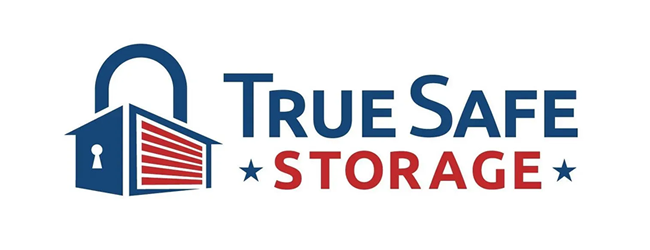TrueSafe Storage Blog

Organizing your storage unit is key to ensuring you can easily access your belongings and keep everything safe. Proper labeling and maintaining an accurate inventory can save time, reduce stress, and prevent lost or damaged items while using TrueSafe Self Storage. 1. Start With a Plan Before packing your storage unit, create a plan for how you want to organize your items. Group similar items together, such as holiday decorations, seasonal clothing, or office supplies. Planning ahead will make labeling and inventorying much easier. 2. Use Clear and Consistent Labels Labeling each box or container clearly is essential. Use a permanent marker or printed labels and include a brief description of the contents. For extra clarity, number the boxes and refer to these numbers in your inventory list. 3. Keep an Inventory List Maintain a detailed inventory of everything in your storage unit. Include the box number, contents, and any special notes about fragile or valuable items. This inventory can be kept digitally or on paper, but make sure it is easily accessible for reference. 4. Highlight Fragile or Valuable Items If certain items are fragile or high-value, mark them clearly on both the box and the inventory list. This ensures they are handled with care and can help in insurance claims if necessary. 5. Organize for Accessibility Place frequently used items near the front of your unit and stack boxes in a way that allows you to retrieve them without moving everything else. Avoid packing items too tightly, as this can make it difficult to find what you need later. 6. Use Color Coding or Categories Consider using color-coded labels or categorizing boxes by type (e.g., red for kitchen items, blue for office supplies). This visual system can make it faster to locate items and improve overall organization. 7. Update Your Inventory as Needed Whenever you add or remove items from your storage unit, update your inventory list immediately. Keeping an up-to-date record ensures nothing gets lost or forgotten over time. Proper labeling and maintaining an accurate inventory are essential for storage success. Following these tips ensures your items stay organized, easily accessible, and protected while in storage at TrueSafe Self Storage.

Life has a way of filling up our homes and garages with more belongings than we realize. From seasonal items to family keepsakes, clutter can sneak up on anyone. If you’ve been wondering whether a storage unit could make life easier, here are five clear signs it might be the right time to rent one. 1. Your Home Feels Cluttered If your closets are overflowing, your garage is packed, or you can’t seem to find what you need, it may be time for extra space. A storage unit allows you to keep the things you care about without sacrificing comfort at home. 2. You’re Moving or Downsizing Moving is stressful enough without worrying about where everything will fit. Renting a storage unit gives you flexibility—whether you’re in between homes, downsizing, or just need a safe spot for extra items during the transition. 3. Seasonal Items Are Taking Over Holiday decorations, lawn equipment, and sporting gear can quickly eat up space in your home. A storage unit is a great way to keep these items out of sight until you need them again. 4. You Run a Small Business From excess inventory to documents and supplies, business storage can free up valuable space in your office or home. With a storage unit, you’ll have an organized spot to keep everything safe and accessible. 5. You Want to Protect Valuables Sometimes, you just need a secure place for belongings you don’t want lying around the house. With features like gated access and 24/7 monitoring at TrueSafe Storage, you can store your valuables with confidence. Ready to Reclaim Your Space? If any of these signs sound familiar, it may be time to rent a storage unit. At TrueSafe Storage in Adairsville, we offer convenient unit sizes, secure facilities, and easy access so you can get the space you need—when you need it. Reserve your unit today and enjoy peace of mind knowing your belongings are safe.

How Self Storage Can Help You Through Life Transitions Going through a divorce or separation is never easy. It's an emotional and logistical challenge that often requires making quick decisions about living arrangements, personal belongings, and next steps. In the midst of it all, self storage can be a powerful tool—offering the space and flexibility you need to navigate this new chapter of your life. At TrueSafe Storage, we understand that major life changes come with uncertainty, and we’re here to provide a secure, stress-free place for the things that matter most. Take the Pressure Off With Temporary Space When you're facing a sudden move or splitting a household, it's not always possible—or practical—to make long-term decisions right away. That’s where a storage unit can help. Renting a clean, secure unit gives you breathing room to sort through your items at your own pace, without feeling rushed or overwhelmed. Whether you're downsizing, moving in with family temporarily, or looking for your own place, a storage unit ensures your belongings are safe and out of the way until you're ready to take the next step. A Safe Place for Sentimental Items During a separation, it’s common to feel unsure about what to keep, donate, or part with. By using TrueSafe Storage, you can store sentimental items—like photo albums, keepsakes, or furniture passed down through generations—without needing to make any tough decisions immediately. Having a neutral, secure place to store your belongings helps reduce conflict and allows each person involved to revisit these items when emotions have settled. Start Fresh—With Peace of Mind Starting over is hard, but it can also be empowering. A well-organized storage unit can help you feel more in control, giving you one less thing to worry about as you plan your future. Whether you're storing your entire household or just a few key items, TrueSafe Storage offers units in a range of sizes, with flexible month-to-month rentals and 24/7 access at many locations. Our team is here to make your transition as smooth as possible—with clean, secure units, climate-controlled options, and affordable pricing that fits your budget. We're Here When You Need Us At TrueSafe Storage, we don’t just provide a space—we provide support. If you’re going through a divorce or separation and need a reliable, judgment-free place to store your belongings, we’re here to help you take the first step toward a fresh start. Contact us today to find the right storage solution for your needs—or visit our Size Guide and FAQ to explore your options.

Military life can be unpredictable—from frequent moves to deployment and temporary housing. For military families, having a flexible, secure storage option can make all the difference. That’s where TrueSafe Storage comes in. Here’s how military families benefit from temporary self storage—and why we’re proud to support those who serve. 1. Make PCS Moves Easier Permanent Change of Station (PCS) orders often come quickly, and sometimes the timing doesn’t line up with housing availability. A self storage unit can bridge that gap, giving you a safe place to keep your belongings while you transition to your next duty station. 2. Store Essentials During Deployment When one or both service members deploy, families may temporarily relocate or downsize. Instead of selling or hauling everything, many choose to store furniture, household goods, and personal items until they return. 3. Flexibility When You Need It Most Military life doesn’t always follow a fixed timeline. That’s why TrueSafe Storage offers month-to-month leases, so you’re never locked into a long-term commitment. Adjust your unit size or rental length as your needs change. 4. Safe and Accessible Our clean, secure facility provides peace of mind while you focus on what matters most. With easy access and friendly support, TrueSafe makes it simple for military families to retrieve or store items at their convenience. 5. Supportive of Military Service At TrueSafe Storage, we’re proud to support our military community. We understand the unique needs of military life and are here to help make transitions a little easier—whether you're moving across the country or returning home from duty. TrueSafe Storage: Here When You Need Us Military life comes with a lot of moving parts—let us help you manage one of them. TrueSafe Storage offers convenient, flexible, and secure storage options that give military families one less thing to worry about. Contact us today to find the right storage solution for your next move or deployment.

Summer break is an exciting time for college students—but packing up your entire dorm or apartment just to haul it all back in the fall? Not so much. That’s where TrueSafe Storage comes in. Our self storage options make it easy for students to store their belongings safely and affordably during the summer months. Here’s why summer storage is a smart move for students: 1. Skip the Haul Back Home If you live out of state or even just a few hours away, moving your furniture, bedding, and books back home can be a major hassle. With a storage unit near campus, you can leave your stuff where you’ll need it in the fall—saving time, gas money, and frustration. 2. Avoid Clutter at Home Let’s be honest—your parents probably don’t want your mini fridge or five bins of dorm decor cluttering up the garage. A storage unit gives your belongings a temporary home without taking over someone else’s. 3. Safe, Reliable Storage At TrueSafe Storage, we take security seriously. Our facility is clean, well-maintained, and designed to give you peace of mind while you’re enjoying your summer break. You can store everything from textbooks and clothes to futons and microwaves—without worry. 4. Flexible and Affordable We offer short-term rentals with no long-term contracts—perfect for the summer months. Choose the unit size that fits your needs and budget, then relax knowing your belongings are stored securely until you’re ready for the new semester. 5. Easy Access When You Return Our convenient access hours and helpful team make moving back in a breeze. Pick up your things when it works for you and move back into your dorm or apartment stress-free. Make Your Summer Move Simple with TrueSafe Storage Skip the heavy lifting, last-minute packing, and overflowing car rides. TrueSafe Storage is the smart, affordable solution for college students who want to store their stuff safely during summer break. Reserve your unit today and enjoy a stress-free summer!

When it comes to storing your belongings, security isn’t just a feature—it’s a priority. At TrueSafe Storage, we know how important it is to trust where you store the things that matter most. Whether you’re storing household items, business inventory, or valuable equipment, our facility is built to give you peace of mind every step of the way. If you’ve been searching for “storage near me” and care about more than just space—you want security, flexibility, and service—you’ve found the right place. At TrueSafe Storage, we offer self storage solutions backed by the one thing that matters most: trust. Self Storage Units That Prioritize Your Security As our name suggests, TrueSafe Storage puts safety first. From the moment you pull into our facility, you’ll notice the difference. We’ve designed every part of our property to keep your items protected. Our security features may include: 24/7 surveillance cameras Gated facility access Keypad entry systems Fenced perimeter and well-lit grounds On-site staff during business hours These layers of protection create a secure environment so you can feel confident leaving your belongings with us. It’s not just self storage—it’s safe storage you can rely on. Convenient Storage Options for Home and Business TrueSafe Storage is proud to serve a wide variety of customers, from homeowners and renters to small businesses and contractors. Whether you need to store furniture, holiday decorations, office supplies, or tools, we’ve got the perfect unit for your needs. Popular uses for residential storage include: Moving or downsizing Temporary storage during home renovations College student summer storage Decluttering and organizing For businesses, our storage units are ideal for: Inventory management Equipment and tools Temporary overflow storage Paper files and office supplies No matter what brings you through our gate, you’ll find that our units are clean, accessible, and easy to rent—on your schedule. Flexible Rental Terms Without the Hassle Life doesn’t always follow a set timeline, and your storage plan shouldn’t have to either. At TrueSafe Storage, we offer month-to-month rentals so you can rent a unit for as long—or as little—as you need. We also make managing your account simple with convenient features like: Online payments and account access Automatic billing options Easy move-in and move-out process You’ll never be locked into a long-term contract, and our team is always here to answer questions or help you adjust your storage plan as your needs change. A Range of Unit Sizes to Fit Every Need We know storage isn’t one-size-fits-all. That’s why we offer a variety of unit sizes to suit different needs and budgets. Whether you’re storing a few boxes or an entire household, you’ll find the right fit at TrueSafe. Our most common unit sizes include: Small units – great for seasonal items, student storage, or document storage Medium units – ideal for 1-2 bedroom apartment contents Large units – perfect for full home moves or commercial storage Not sure which size you need? Our on-site team is happy to help you find the right option. Local Storage You Can Trust At TrueSafe Storage, we’re proud to be part of the local community. We’re not just here to rent storage units—we’re here to build trust. That means providing clean, reliable, and secure spaces for your belongings and offering the kind of customer service you can count on. From first-time renters to long-term customers, we work hard to make sure everyone has a positive experience at our facility. We believe great storage is about more than just four walls and a lock—it’s about making your life easier. Ready to Reclaim Your Space? If your garage is packed, your office is overflowing, or your closets are bursting at the seams, it’s time to make more room for what matters. With TrueSafe Storage, you get a secure, convenient place to store your belongings—backed by a team that truly cares. Stop searching for “storage units near me” and choose a facility that puts your needs first. Contact TrueSafe Storage today to learn more about availability, pricing, and how we can help you find the right storage solution.

Wood furniture is often valuable—whether it’s a family heirloom or a favorite dining table, you want to keep it in great shape for years to come. So, if you're considering putting it in storage, you're probably wondering: Can you store wood furniture safely in a self storage unit? The answer is yes—with the right preparation. Clean Before You Store Before putting any wood furniture into storage, make sure it’s clean and dry. Dust, grime, and food residue can lead to staining or even attract pests. Use a soft cloth and a wood-safe cleaner to wipe down surfaces, and let everything dry completely before moving it. Disassemble If Possible Breaking furniture down into smaller pieces helps prevent stress on joints and makes it easier to wrap and move. Remove legs from tables and detach shelves or drawers when possible. Be sure to keep hardware in a labeled bag so you can easily reassemble everything later. Wrap for Protection Protect furniture with covers—but skip the plastic wrap. Plastic can trap moisture and damage the wood. Instead, use furniture blankets, moving pads, or old sheets to cover each item. This helps shield the surface from dust, scratches, and light bumps. Keep Furniture Off the Floor To add an extra layer of protection, place furniture on pallets or boards rather than directly on the floor of the storage unit. This helps air circulate and adds a buffer against any possible changes in temperature or ground-level moisture. Store Strategically When loading your unit, place heavy items on the bottom and avoid stacking pieces in a way that could cause pressure or warping. Make sure to leave space around larger furniture to allow airflow and make it easier to access items later. Storing Wood Furniture with TrueSafe Storage At TrueSafe Storage, we offer convenient, secure units perfect for storing your wood furniture and more. With easy access and top-notch customer service, you can feel confident knowing your belongings are in good hands. Need help choosing the right unit size or have questions about storage tips? Our team is here to help—contact us today!

Storing fragile items in a storage unit requires extra care and attention to ensure they remain in excellent condition. Whether you’re storing glassware, antiques, electronics, or artwork, properly packing and storing fragile items can prevent damage and keep your belongings safe. In this guide, we’ll walk you through the steps to safely store delicate items in your TrueSafe Storage unit, so you can rest easy knowing your valuables are well-protected. 1. Use Proper Packing Materials Packing fragile items with the right materials is the first step to preventing damage during storage. Here’s what you’ll need: Bubble Wrap – Wrap fragile items like glassware, vases, and ceramics in bubble wrap to provide cushioning. Be sure to cover all surfaces and secure the wrap with tape. Packing Peanuts – Fill empty spaces in boxes with packing peanuts to prevent movement and protect items from impact. Foam Sheets or Foam Corners – For extra protection, especially with larger or more delicate items, foam sheets or corners can absorb shock and keep items from shifting in the box. Sturdy Boxes – Use boxes made from thick, double-walled cardboard for added protection. Ensure the boxes are the right size for the items being packed to avoid overcrowding. Plastic Bins – For items that are particularly sensitive to moisture, plastic bins with secure lids offer extra protection against the elements. 2. Pack Items Individually When storing fragile items, it’s essential to pack them individually. Don’t cram multiple delicate items into one box; instead, pack each item in its own box with sufficient padding. This will reduce the risk of one item damaging another during storage. For larger, more awkwardly shaped items, such as mirrors or picture frames, use protective corner guards and wrap the item with bubble wrap or foam sheets. For glass mirrors, it’s best to store them vertically to avoid pressure from the weight of other items. 3. Label Boxes Clearly When storing fragile items, labeling is key. Mark boxes containing delicate items with a clear “fragile” label, and use a permanent marker to note which side should face up. This will help anyone handling your storage unit to be extra cautious when moving the boxes. Additionally, if you have boxes with multiple fragile items inside, include a detailed list of the contents for quick identification. This will save you time when retrieving items and reduce the risk of mishandling. 4. Store Fragile Items in Safe Locations Within the Unit Once you’ve packed your fragile items, it’s essential to store them correctly in the unit. Here are some tips to ensure they stay safe: Place fragile items near the front: This makes it easier to access them without disturbing the rest of your items. Store on shelves: If possible, store fragile items on shelves, not directly on the floor. This reduces the chances of them being damaged by water or dirt and makes it easier to access them without shifting other items. Avoid stacking heavy items on top of fragile items: Heavy boxes or furniture should always be placed at the bottom, with lighter and more fragile items stacked on top. Use dividers for smaller items: Dividers or storage bins can help organize and separate fragile items, reducing the risk of breakage when moving other items in or out of the unit. 5. Consider Climate Control for Sensitive Items Certain fragile items, such as electronics, photographs, and artwork, may be sensitive to temperature fluctuations or humidity. If you’re storing valuable or highly sensitive items, consider renting a climate-controlled unit at TrueSafe Storage. These units help maintain a stable environment, protecting your items from extreme heat, cold, and moisture. 6. Avoid Storing Items That Are Too Fragile While most fragile items can be safely stored, some may be too delicate or valuable to store in a self-storage unit. If you’re unsure whether an item should be stored, it’s worth considering other options, such as professional storage services for antiques or fine art. 7. Regularly Check on Your Stored Items If possible, plan periodic visits to your storage unit to check on your fragile items. This will allow you to ensure they’re still properly packed, adjust their positioning if necessary, and address any potential issues (such as humidity or pests) before they become a problem. Store Your Fragile Items Safely at TrueSafe Storage Storing fragile items doesn’t have to be a stressful experience. By following these simple steps and using the right materials, you can keep your delicate belongings safe and sound in a TrueSafe Storage unit. If you’re in need of a secure storage solution in the area, contact TrueSafe Storage today to learn more about our available units, including climate-controlled options, and how we can help you store your most valuable items with care.

Downsizing can feel overwhelming, whether you’re moving into a smaller home, transitioning to a simpler lifestyle, or helping a loved one adjust to new living arrangements. The good news? Self storage can make the process much easier and less stressful. Here’s how TrueSafe Storage can help you make downsizing a smooth and hassle-free experience. 1. Store Items You’re Not Ready to Part With Letting go of belongings can be emotionally challenging, especially when they hold sentimental value. Self storage gives you the flexibility to keep items you’re not ready to part with yet, while still clearing out space in your home. Over time, you can revisit these items and decide what to keep, donate, or discard. 2. Declutter Without the Pressure Downsizing often means sorting through years of accumulated possessions. With a self storage unit, you can take your time to organize and declutter without the immediate pressure to make decisions. This step-by-step approach can reduce stress and allow you to focus on what truly matters. 3. Keep Seasonal and Occasional Items Safe Some items, like holiday decorations, seasonal clothing, or sporting equipment, are only needed at certain times of the year. A self storage unit is the perfect place to keep these belongings safe and out of the way, freeing up valuable space in your new home. 4. Easily Transition Into Your New Space Moving into a smaller home often requires creative solutions to maximize space. By using a storage unit, you can keep essential items close at hand while gradually adjusting to your new space. This flexibility makes the transition more manageable and less overwhelming. 5. Securely Store Valuable Belongings If you have high-value items, such as antiques, collectibles, or heirlooms, a secure self storage unit can provide the peace of mind you need. TrueSafe Storage offers clean, well-maintained units with advanced security features to protect your belongings. Why Choose TrueSafe Storage for Downsizing? At TrueSafe Storage, we’re committed to making your downsizing journey as seamless as possible. Here’s what sets us apart: Flexible Unit Sizes: From small units for a few boxes to larger spaces for furniture, we have options to suit your needs. Convenient Access: Our facilities are designed for easy access, so you can retrieve your items whenever you need them. Top-Notch Security: With advanced security systems, you can trust that your belongings are safe with us. Friendly Support: Our team is here to answer your questions and help you find the perfect storage solution. Start Your Downsizing Journey Today Whether you’re preparing for a move, clearing out clutter, or creating a more organized living space, TrueSafe Storage is here to help. Contact us today to learn more about our storage options and find the perfect unit for your needs.

